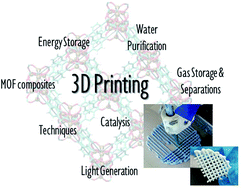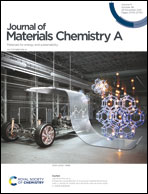3D printing of metal–organic framework composite materials for clean energy and environmental applications
Abstract
The world is facing a climate emergency: unchecked pollution coupled with rising CO2 levels is putting unprecedented strain on the planet's ecosystems. Technologies for environmental remediation are thus becoming increasingly important. One very promising class of candidate materials for these applications is Metal–Organic Frameworks (MOFs). Owing to their ultrahigh surface areas and the tunability of their chemical structures, these porous materials show enormous promise in catalysis, adsorption and separations. To date, MOFs have not been well represented in industry, in part due to difficulties in shaping and handling the polycrystalline powders. 3D printing offers a powerful and versatile approach to shape MOFs into monoliths with a broad range of uses from gas storage and separations to light generation. This review focuses on recent progress in shaping MOFs via 3D printing with the current state-of-the-art in energy and environmental applications. Several techniques are examined including Fused Filament Fabrication (FFF), Digital Light Processing (DLP), Selective Laser Sintering (SLS) and direct ink writing (also know as robocasting). At present, the latter technique is most compatible with MOFs and is represented in almost every application examined herein. However, more complex techniques, such as DLP and SLS, show great promise, and as the techniques continue to develop may also become prominent methods for shaping industrially applied MOF-based technologies.

- This article is part of the themed collection: Journal of Materials Chemistry A Recent Review Articles


 Please wait while we load your content...
Please wait while we load your content...